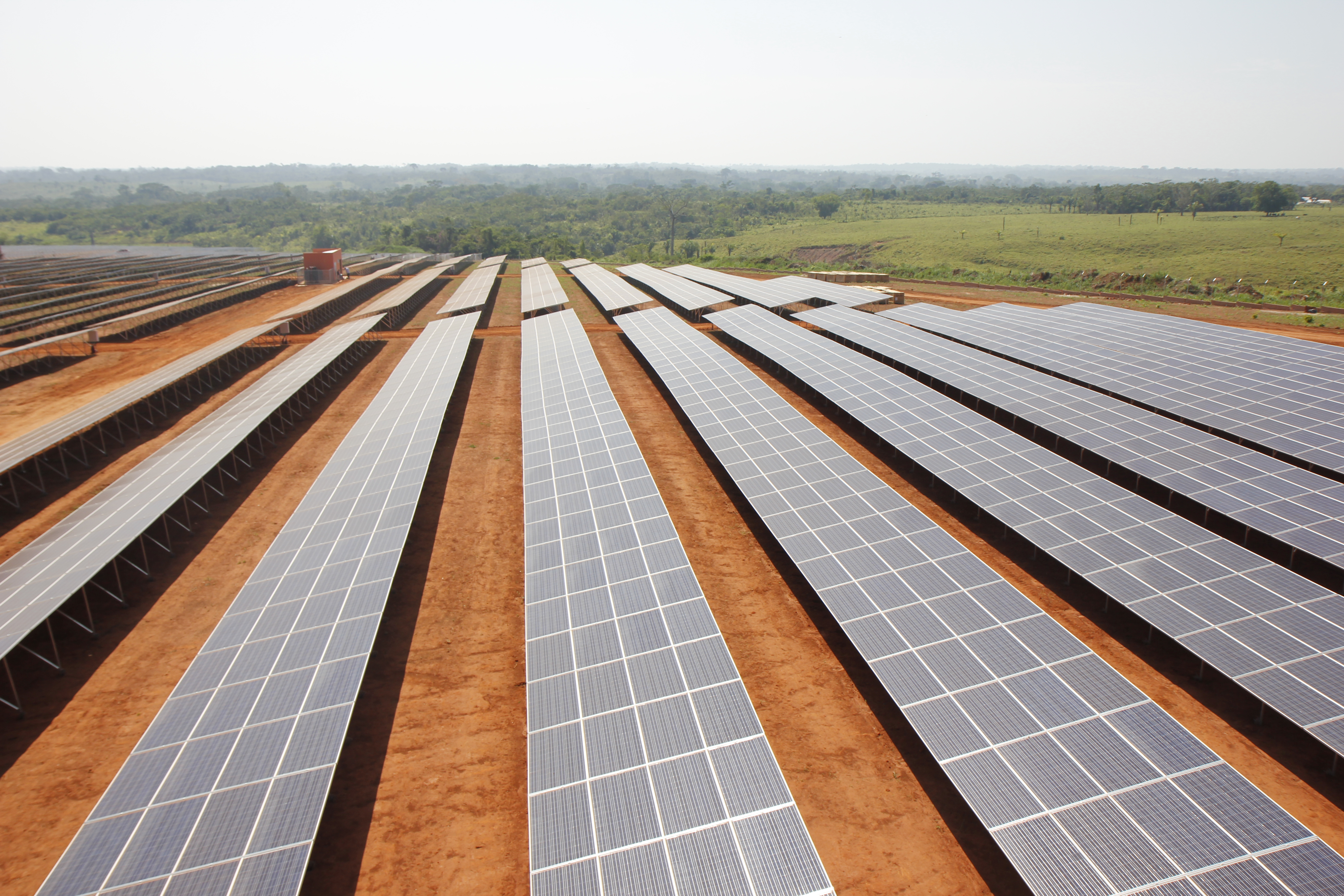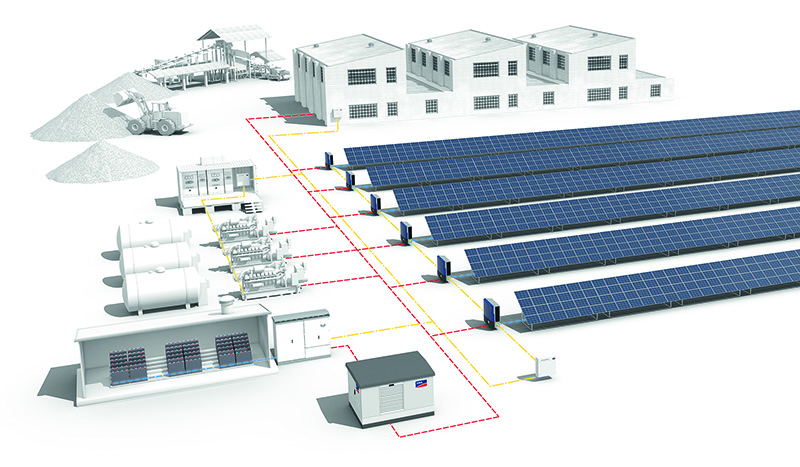World’s largest PV-diesel hybrid plant begins construction in Bolivia

The world’s largest PV-diesel hybrid power plant with a battery storage system is currently being built in the Bolivian province of Pando. SMA has been not only selected to supply the PV inverters for this project, but also SMA’s Fuel Save Controller, which recently won the Intersolar Award in the PV category. SMA was also selected to provide four newly-developed inverters for large-scale battery storage systems using lithium-ion technology.
This PV-diesel hybrid power plant with battery storage system has an estimated output of approximately 5MW and is designed to generate enough clean solar power to cover about half of the energy demand in the provincial capital of Cobija and neighboring towns in northern Bolivia. The residents and companies of this area consume about 37GWh of energy per year—a rate that is steadily increasing.
Since the region is not connected to a public utility grid, power for the local grid has been produced exclusively with diesel generators.
“Thanks to our intelligent control engineering, we are able to integrate even large shares of solar power into diesel-powered grids. This reduces operating costs and CO2 emissions as well as dependence on diesel fuel,” said Volker Wachenfeld, Senior Vice President Off-Grid & Storage.
The system will feature six Sunny Central 800CP-XT, four Sunny Central Storage 630 battery inverters and an SMA Fuel Save Controller as the central component of the hybrid system. The general contractor for the project is Isotron S.A.U. (ISASTUR Group). The Bolivian electric utility company ENDE (Empresa Nacional de Electricidad) owns the power plant while Eléctrica Guarachi S.A. is tasked with project management.
Wachenfeld is especially excited about the pioneering use of the SMA Fuel Save Solution in this PV-diesel hybrid power plant, which will start supplying solar power to the area by the end of the year.
“The SMA Fuel Save Solution was developed to meet these types of technological challenges. With the inverters, the SMA Fuel Save Controller is a core component of the PV system. It acts as a demand-driven controller of solar power feed-in to the interface between the diesel generator, PV array and power load. The SMA Fuel Save Controller records the energy flows in the stand-alone grid and uses that information to determine the maximum permissible PV power. In this way, we can ensure system stability and a smooth control of the generators.”
Bolivia’s Goal: Stable Electricity Supply by 2015
Previously only about 80 percent of the Bolivian population had access to electricity, which is why the government has embraced new methods of power generation and supply for its citizens. According to a statement made by government spokesman Hugo Sosa last year, the main goal is to increase that share to 95 percent by 2015.
Renewable energy will play an important role in achieving that goal. Due to a high degree of solar irradiation, Bolivia has significant potential for solar energy use. The technical requirements for the components used here are high given that the entire Bolivian plateau, which is the most central and largest part of the country, is almost 4,000 meters in altitude.





Feel free to contribute!